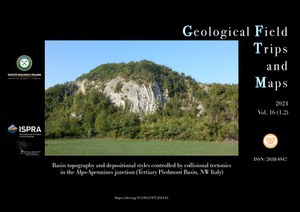Basin topography and depositional styles controlled by collisional tectonics in the Alps-Apennines junction (Tertiary Piedmont Basin, NW Italy)
The field trip illustrates the changes in the late Eocene-Miocene depositional systems filling the Tertiary Piedmont Basin in response to major palaeogeographic reorganizations linked to the evolution of the Alpine-Apennine tectonic junction. During days 1st-2nd-3rd the field trip aims to show some key outcrops of the southwestern part of the basin, where Tertiary sedimentary units unconformably cover the basement of the Ligurian Alps. During days 4th-5th the most significant outcrops of the upper Eocene-Lower Miocene sequence are shown covering the Ligurian Units of Northern Apennines in the Alps-Apennines tectonic knot. Several depositional systems are here examined, including alluvial, marginal marine, shelf, intra-slope, and basin-plain turbidites. Outcrop observations are integrated with photogrammetric models and seismic images from the time-equivalent buried systems within the study area. Topics covered in the guide include: 1) relationships between morphostructural elements and origin of sequence boundaries driven by relative sea level falls vs. hinged-margin drowning unconformities driven by hinged accommodation on oversteepened shelf margins; 2) morphologies of deep-water erosion; 3) controls of the basin morphology on the development of turbidite facies and architecture; 4) turbidite petrography and its implication on origin and source of mud-grade sediments; 5) implications for characterisation of analogue hydrocarbon plays and reservoirs.
DOI: https://doi.org/10.3301/GFT.2024.02

